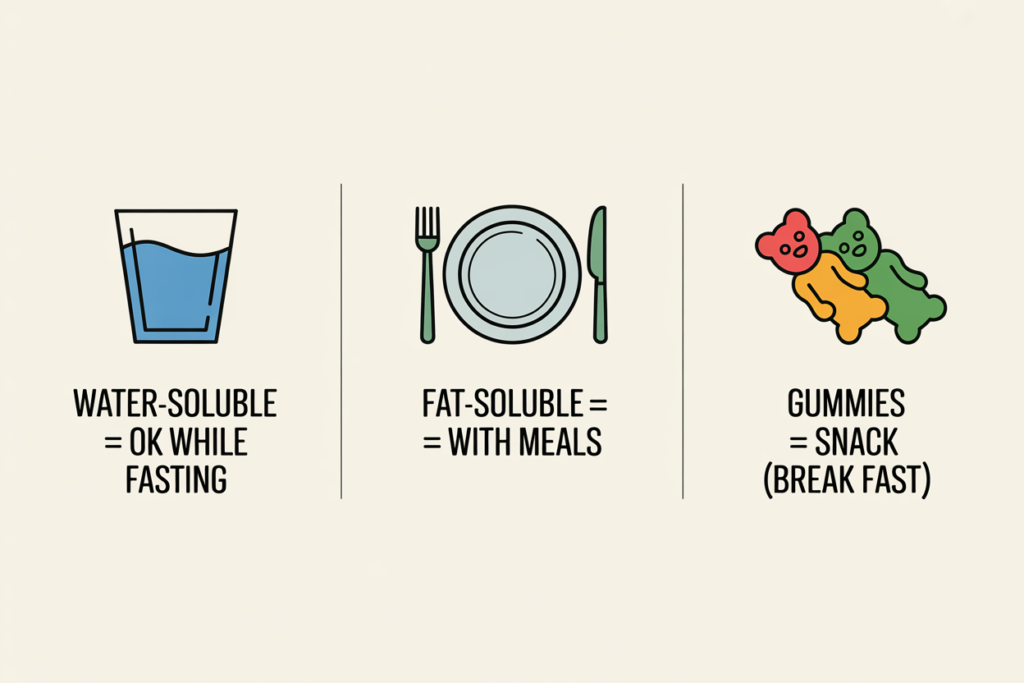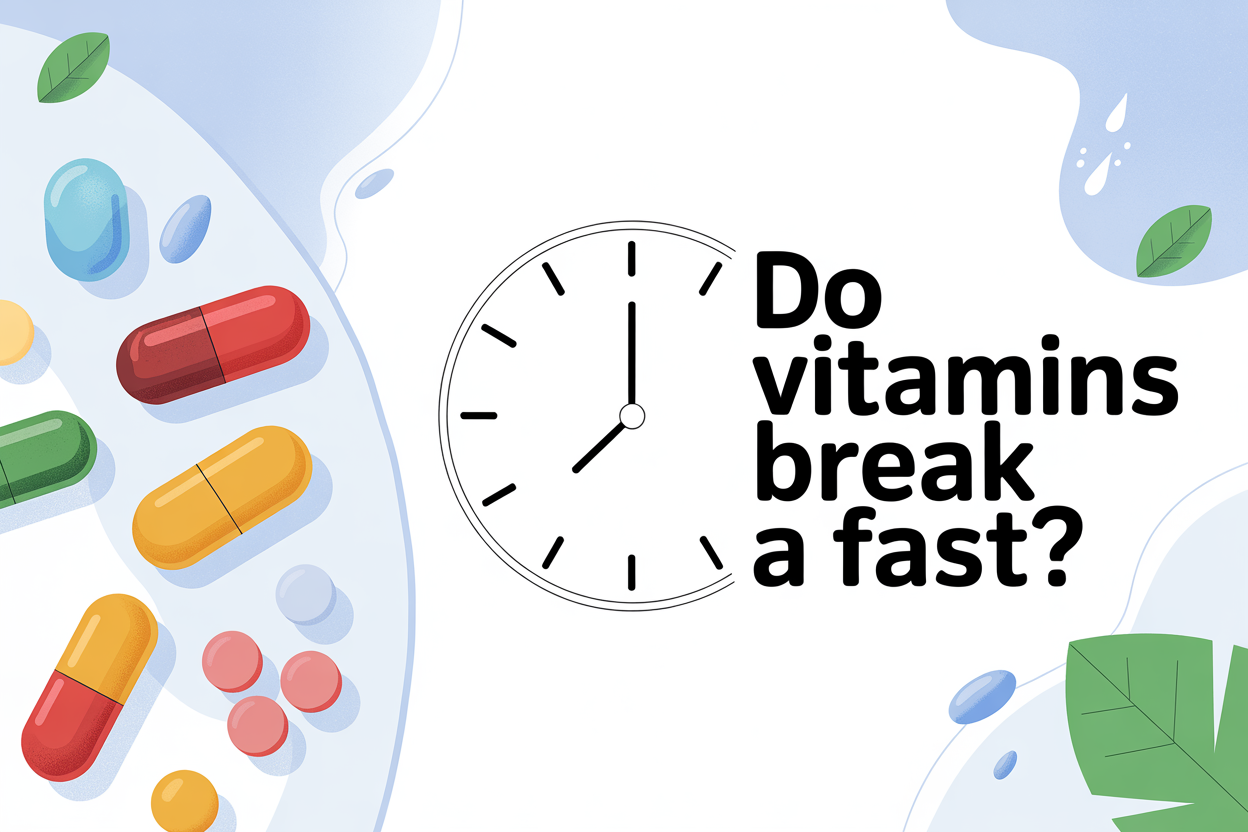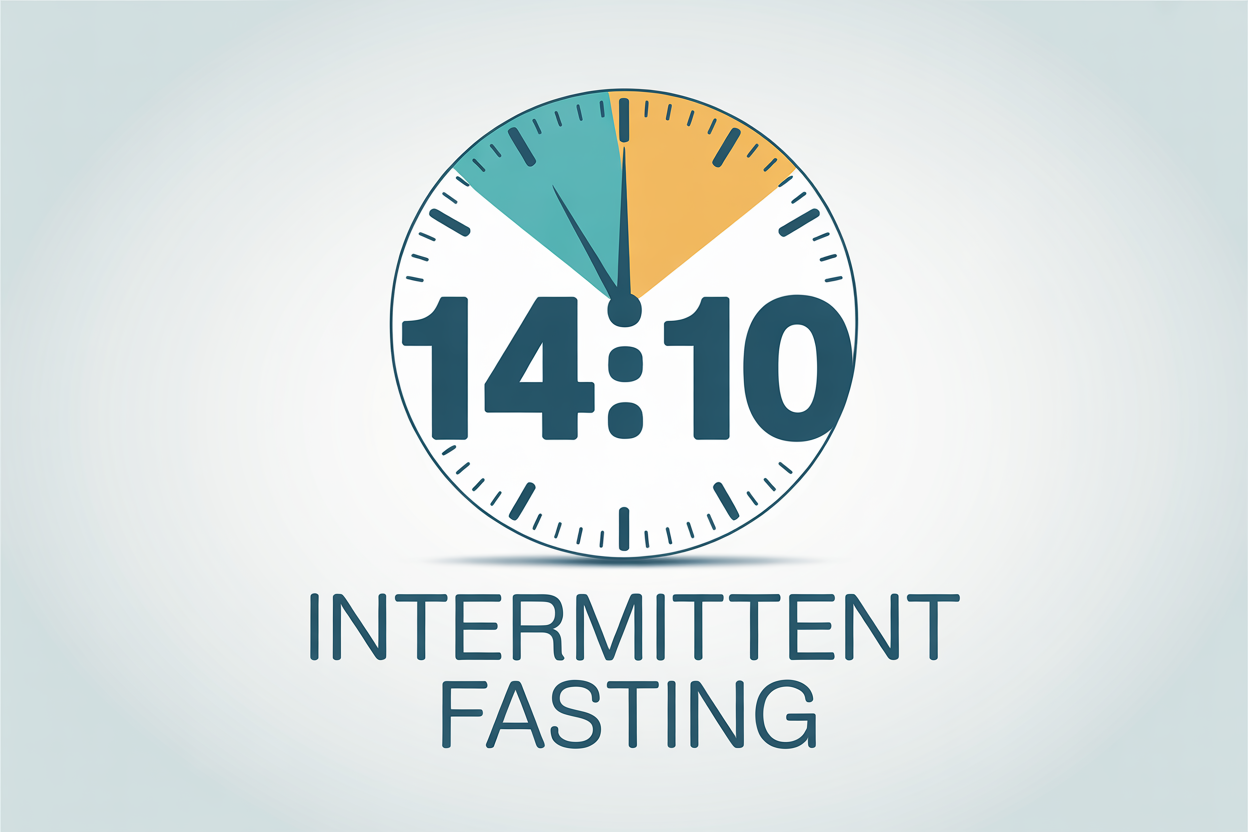It’s early in your fast. You’ve skipped breakfast, your coffee is black, and you reach into the cabinet for a multivitamin—or maybe a bright-colored gummy. Halfway through the motion, you pause. Does this count as breaking my fast?
The answer depends on more than calories. It comes down to what kind of vitamin you’re taking, how it’s made, and what your fasting goal actually is.
Water-Soluble vs Fat-Soluble vs Gummies and Multis: How Do They Impact Fasting?
Water-Soluble (Vitamin C, B-Complex, Electrolytes): Fast-Safe Support
These dissolve in water and move quickly through the bloodstream. Your body doesn’t store them long-term, and excess amounts are excreted in urine. Absorption happens through specialized carrier mechanisms in the small intestine.
Because they don’t depend on dietary fat, you can take water-soluble vitamins during a fast without losing much absorption efficiency. That said, B-vitamins—especially high-dose B-complex formulas—can make some people nauseous when taken on an empty stomach. If that’s you, push them to your first meal.
Fat-Soluble (A, D, E, K, and Omega-3 Oils): Best Taken with Meals
These vitamins hitch a ride with fat. They’re packaged into micelles and chylomicrons and rely on bile acids and pancreatic enzymes to enter circulation.
When you take them fasted, those digestive aids are dormant. A controlled study showed that vitamin E absorption dropped dramatically in fasting participants compared with those who ate a meal containing fat.
So while a gel capsule won’t “break” your fast calorically, it won’t absorb well, and it may leave you queasy. Taking fat-soluble vitamins alongside food ensures they actually do their job.
Gummies/Chewables/Multivitamins: The Fast-Breaking Vitamins
Gummies almost always include sugar, gelatin, maltodextrin, or oil to hold their shape. Even small amounts of these ingredients create feeding signals in the gut and mouth. That means you’re no longer in a true fasted state, at least from a signaling perspective.
Multivitamins are a mixed bag: part water-soluble, part fat-soluble. Without food, half the nutrients underperform, and the rest can irritate the stomach. Best move: wait until your first meal.
Additives to Watch for to Avoid Breaking Your Fast
Check for hidden ingredients, like artificial sweeteners, sugar alcohols, rice flour, or MCT oil. They might not add many calories, but they can trigger cephalic phase insulin release or mild GI upset. The cleaner the capsule, the cleaner your fast.
The Goal Lens: What Are You Actually Chasing?
If your fast is mostly about weight control or habit building, a water-soluble vitamin won’t derail progress. The insulin and calorie impact is trivial.
If your aim is deep metabolic work—autophagy, gut rest, or sharpening insulin sensitivity—then any additive or fat-based capsule could blur those results. Fasting research now frames the window not just as calorie absence but as a period of cellular communication and repair. Even small nutrient cues may shift those pathways.
A Practical Plan to Ensure You Achieve Your Fasting Goals
If You Fast in the Morning
Take plain water-soluble vitamins (C, B-complex, electrolytes) if needed. See how your stomach tolerates them. It’s also best to delay fat-soluble vitamins (A, D, E, K, omega-3s) until your first meal. That’s when bile and enzymes are active, improving absorption and reducing nausea. Plus, go ahead and skip the gummies until the eating window; they carry sugar and gelatin that interrupt fasting signals.
Special Cases to Keep in Mind
Not all vitamins are created equally. For instance, iron absorbs best away from calcium and dairy. Pair with vitamin C for uptake, but try to take it with your first meal to avoid stomach pain. When it comes to multivitamins, take them with food for their full effect. If you have any minerals in your cabinet, you’ll be happy to know that plain magnesium or sodium/potassium tablets (without sweeteners) are fine during fasting. They help maintain electrolytes without breaking them.
A Note on Absorption and Timing
Water-soluble vitamins use active transport and don’t require fat for uptake. However, fat-soluble vitamins need fat and bile for micelle formation, which fasting suppresses. Studies consistently show higher bioavailability of vitamins A and E when taken with meals containing fat. Interestingly, extended fasting may shift vitamin balance. In a 10-day supervised fast, participants maintained stable vitamin C and B levels but saw mild increases in A and E stores—likely from mobilized fat.
At the end of the day, absorption depends on digestive context. Even the best supplement can’t help if it isn’t absorbed.
Simplified Rules for Real Life

Keep your fasting window clean if you’re after deep metabolic or cellular benefits: stick to water, black coffee, or tea. If you need to take vitamins mid-fast, choose a pure water-soluble formula with minimal fillers. Take with water and gauge tolerance.
It’s also best to move fat-soluble or mixed vitamins to your first meal for maximum benefit. Treat gummies and chewables as food because they belong inside your eating window. And if something makes you queasy, it’s not your fault. Vitamins are nutrients, not purity tests. Timing them right matters more than forcing them.
Bottom Line: Most Pills Don’t Break a Fast, but Timing Matters
Calorie-wise, vitamins don’t end a fast. But contextually, timing changes everything.
- Water-soluble: fine during fasting.
- Fat-soluble: wait until food.
- Gummies/chewables: treat as snacks.
Taking vitamins with the right meal improves absorption, reduces nausea, and keeps your fasting window clean. Your fast stays intact—and your supplement routine finally makes sense.
Track What Actually Works with the Fasting App by Municorn
Every body responds differently. Use the Fasting App by Municorn to log what you take—vitamins, minerals, or electrolytes—and when you take them. Track energy, focus, cravings, and GI comfort on “supplement days” versus “clean fast” days.After two weeks, you’ll see exactly which choices support your focus and which ones throw you off. No guesswork, no rules-for-rules-sake—just real data from your body.



